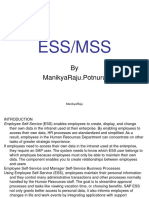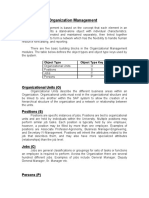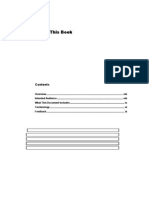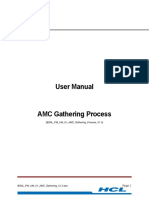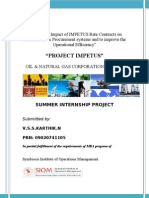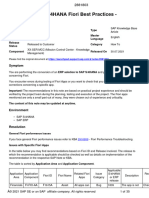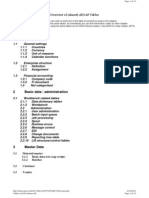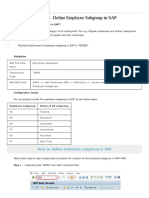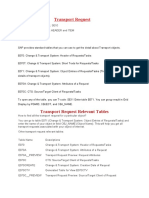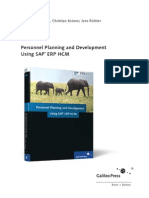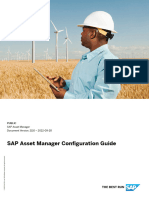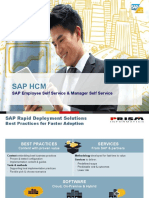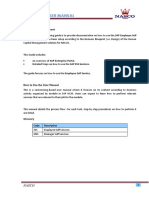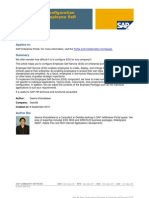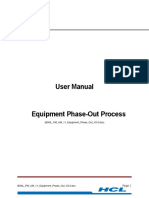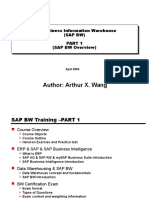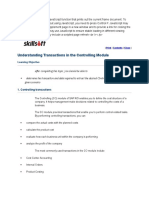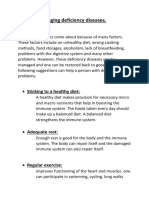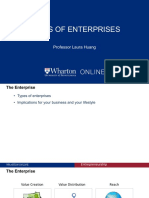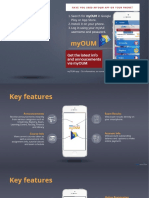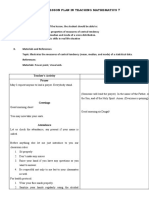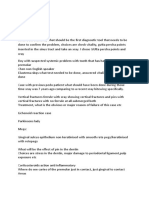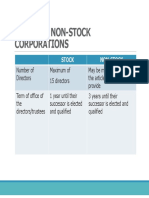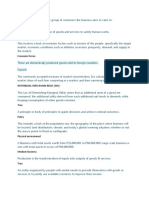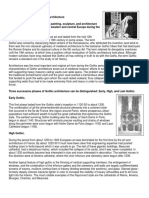Employee Self Service (ESS)
User Manual
Contents
ESS User Manual
Page | 1
�INTRODUCTION................................................................................................................................ 4
Purpose of the document................................................................................................ 4
How to Use the User Manual........................................................................................ 4
Glossary.......................................................................................................................... 4
Human Capital Management (HCM) Overview.................................................................................6
Overview of Employee Self Services...............................................................................7
Road Map........................................................................................................................ 8
Employee Self Services Scenarios................................................................................................. 9
Logging on to SAP EP System........................................................................................................ 13
Understanding elements of SAP EP (Portal Desktop)....................................................15
Navigating Menus......................................................................................................... 15
Logging out of SAP EP System...................................................................................... 16
Scenario: Employee Search........................................................................................................... 17
Introduction................................................................................................................... 17
Scenario Diagram......................................................................................................... 18
Whos Who.................................................................................................................... 18
Change own data.......................................................................................................... 22
Scenario: Personal Information...................................................................................................... 25
Introduction................................................................................................................... 25
Scenario Diagram......................................................................................................... 26
Address......................................................................................................................... 27
Bank Information........................................................................................................... 29
Family Member /Dependents........................................................................................ 33
Personal Data................................................................................................................ 35
Immovable Property Returns......................................................................................... 38
Scenario: Working Time................................................................................................................. 42
Introduction............................................................................................................... 42
Leave Request............................................................................................................... 44
Quota Overview............................................................................................................ 49
Joining Reports.............................................................................................................. 51
Scenario: Benefits and Payments.................................................................................................. 54
Different Types of claims on ESS............................................................................. 55
Navigation to Claim/ Reimbursement .................................................................58
ESS User Manual
Page | 2
�Applying for Different types of claims.................................................................61
LTC.................................................................................................................... 105
Claim/Advance LTC Request..............................................................................107
LTC request approval by controlling officer...........................................................115
LTC Approval by claim approver..........................................................................122
Claim against application................................................................................... 129
FORM 16............................................................................................................ 149
Form 16 view..................................................................................................... 153
ESS Medical Process( Benefits/ Payments).........................................................154
Medical- Outdoor Claim...................................................................................... 154
Medical Executive Health Check- up..................................................................165
INTRODUCTION
ESS User Manual
Page | 3
�Purpose of the document
The purpose of the training guide is to provide documentation on how to use the SAP
Employee Self Service system that has been setup according to the Business Blueprint
(i.e. Design) of the Human Capital Management solution for BSNL.
This Guide includes:
An overview of SAP Enterprise Portal.
Detailed Steps on how to use the SAP ESS Services.
The guide focuses on how to use the Employee Self Service.
How to Use the User Manual
This is a customizing-based user manual where it focuses on its content according to
business activity organized by module in SAP HCM. Users can expect to learn how to
perform relevant services that are relevant to their job for the module.
This manual details the process flow. For each task, step-by-step procedures on how to
perform it are listed.
Glossary
Cod
e
Description
ESS
Employee Self Services
MSS
Manager Self Services
Pre-requisite
As some of the SAP modules are inter-dependent and basic knowledge may have to be
assumed when reading this document, the following table highlights the related
document to provide additional information related to this Training Guide.
ESS User Manual
Page | 4
�Accessing SAP
This section provides an overview of SAP EP system focuses on SAP EP System
Navigation and User Interface (UI) for users who will be using the SAP EP system.
Human Capital Management (HCM) Overview
HR has long been associated with efficiency, driving cost reductions through more
efficient HR processes and related automation. But now HR must also be effective,
helping the organization to fully leverage its human capital by supporting employees,
managers, and executives with strategies that include employee empowerment;
growing, developing, and retaining the workforce/people which is the most important
asset; and helping to plan and measure overall workforce strategies.
ESS User Manual
Page | 5
�SAP HCM streamlines and integrates all essential workforce processes as captured in the
below diagram. It standardizes and consolidates all workforce-related processes and data
onto a single platform, while ensuring adherence to local regulations and laws.
Develop/Perform
Recruit
Personnel Development
Competencies
Learning Solutions
Performance Management
Recruiting
Skills Catalog
Talent Management
Reports
Serve
Manager Self
Service
Employee Self
Service
HCM Service
Delivery
Transact
Employee
Organizati
onal
Core HR
Competen
cy
Workforce
Reporting
Workforce Planning
and Budgeting
Organization Management
Personnel Administration
Payroll
Benefits Administration
Time Management
Travel Request & Expense Mgt
Overview of Employee Self Services
Employee Self Service (ESS) empowers employees to view, create, and maintain data
anytime,
anywhere,
via
web-based
technology
and
interactive
voice
response
functionality. ESS is an effective means for providing real-time access and data
maintenance capabilities to the source, or owner, of the data, and to off-load many of
the data entry and related customer service activities that may be typically performed
in a company's human resources, payroll, benefits, and purchasing departments.
ESS User Manual
Page | 6
�These departments are freed up from many of the routine, day-to-day processing
functions they may be spending a great deal of time on. Instead, resources can be
assigned to activities that are more critical to your company's success. Overall, service
levels and efficiency increase, and costs per transaction can be drastically reduced. The
return on investment is significant
The Employee Self-Service enables employees to create, display, and change their own
HR-related data in the Enterprise Portal. Following are the list of services that are
provided for BSNL employees:
Employee Search
Working Times
Benefits &Payment
Personal Information
Road Map
Road map is tagged to Services to make the it more users friendly. It helps in navigating
the service (Application). It tells the user how many steps are involved in completing the
activity.
Example: Change Own Data under Employee Search
In this service there are totally 3 steps are involved. i.e.
ESS User Manual
Page | 7
Overview
Edit
Review and Save
Completed
It also highlights the step number currently the user is in.
ESS User Manual
Page | 8
�Employee Self Services Scenarios
The usage of SAP Employee Self Service is to provide a single integrated platform and
real-time access for employees to update and access to their information at their own
time.
The following key scenarios will be covered:
Employ
ee
Self Service
Employee
Search
Who
s
Who
Cha
nge
Own
Dat
a
Working
Working
Times
Times
Lea
ve
Req
uest
Quo
ta
Ove
rvie
w
Joini
ng
Rep
orts
Benefits
&
Payment
Sala
ry
Stat
eme
nt
Emp
loye
e
veri
ficat
ion
Rei
mbu
rse
men
t
Mod
uleClai
ms/
adv
anc
es
Loa
n
Req
uest
For
m
16
Indi
an
Sec
80
Ded
ucti
ESS User Manual
Personal
Personal
Informati
Informati
on
on
Add
ress
Ban
k
Info
rma
tion
Fam
ily
Me
mbe
rs/D
epe
nde
nts
Pers
onal
Dat
a
Page | 9
Career
Career
and
and Jobs
Jobs
S-ESS0500
S-ESS0500
Skill
s
App
rais
al
doc
ume
nts
Travel
Travel
and
and
Expenses
Expenses
S-ESS0600
S-ESS0600
Overviews
Personal
Informatio
n
�an
Sec
80
C
Ded
ucti
ons
SL.NO.
SHORT DESCRIPTION
FULL EXPLANATION
Employee Search
Triggering Event:
ROLE
Employee
Information about
colleagues can be seen by
just entering First or
Last Name or both in the
search area.
Employees can create,
display and change their
Departmental information
(Building and
Room Number),
Communication
information (Extension
number and Email ID).
Working Time
Triggering Event:
Employee to raise a new
leave request.
Employee to make changes
to an existing leave
request.
Employee to cancel an
approved leave.
Employee to view his/her
current leave balance for
leave planning purposes.
Employee who wish to
update his/her leave
notification list.
Employee can also choose
to view or generate Time
statement reflecting all
time-related information
like work schedule, leave
balance etc.
ESS User Manual
Page | 10
Employee
�SL.NO.
SHORT DESCRIPTION
FULL EXPLANATION
ROLE
Employee to login to ESS and
perform the above leave
related transactions.
3
Benefits and Payment
Personal Information
Triggering Event:
Employee to view/print his
current/past monthly salary
statement.
Employee to view/print his
yearly tax statement
Employee can create an
employment and salary
verification, which you can
fax to third parties (such as
a bank or loan agency).
Employee to apply for
Loans or make Special
Repayments
Form 16 can be reviewed
for details on Income and
Tax.
Employee to claim advance
request.
Triggering Event:
Viewing of Personal
information via ESS like
employee marital status
online or of
dependents(e.g. spouse,
child) record for Health
Plan/Leave entitlement.
View Addresses.
Update Bank Information.
Employee to login to ESS and
ESS User Manual
Page | 11
Employee
Employee
�SL.NO.
SHORT DESCRIPTION
FULL EXPLANATION
ROLE
update personal particulars.
Depending on the policy, a
document
proof
may
be
required at times for HR
administrators verification.
Triggering Event:
Careers and Jobs
Travel and Expenses
Employees are allowed to
enter their own skills in
ESS. Managers can utilize
the database to identify
employees with the
appropriate skills for the
internal use of the
company.
Using Appraisal Documents
tab employee can display
the appraisals that were
made of
his/her work.
Triggering Event:
Employee to put up a
Travel request (business /
production trip)
Submission
of
expense
claim after the return from
the trip.
Submission
of
general
reimbursement claims like
public transport, private
transport, staffs expense
claim etc.
ESS User Manual
Page | 12
Employee
Employee
�Logging on to SAP EP System
To logon into SAP System, perform one of the following:
Choose the Windows menu Start Programs Internet Explorer
Double click the Internet Explorer (Browser) icon on the users desktop
The Internet Explorer would be initiated. Type URL http://sp05rpx1.erp.bsnl.co.in/irj/portal
and click on the Go button as shown below or click on Enter key on the Keyboard
ESS User Manual
Page | 13
�On Screen SAP Net Weaver, enter information in the fields as specified in the table
below:
Click on
Field Name
Description
User Action and
Values
User
User ID
Enter a valid user id.
Password
Password for User ID
Enter a valid user
password.
button or Press Enter key.
ESS User Manual
Page | 14
�Understanding elements of SAP EP (Portal Desktop)
The portal desktop refers to the entire portal screen, including all displayed content and
its layout.
Navigating Menus
On the home page screen of SAP Employee Self Services, click on Employee SelfService tab in order to access certain service (For example, Employee Self Services
Employee Search Working time Personal Information Personal Data).
ESS User Manual
Page | 15
�Logging out of SAP EP System
On screen SAP Employee Self Services, click on Log off to log out of SAP EP system.
Log Off
ESS User Manual
Page | 16
�Scenario: Employee Search
Introduction
This scenario describes the processes where employees are allowed to search their
colleagues , create or display and change their Departmental information (Building and
Room Number), Communication information (Extension number and Email ID).Type of
information that are opened for employees update and viewing are as below:
Whos Who
Change Own Data
Scenario Diagram
ESS User Manual
Page | 17
�Whos Who
Employ
ee Self
Service
Advance
Search
Employee
Search
Change Own
Data
Whos Who
Search for employees by name and find basic information about colleagues and their
position in the company. Information about colleagues can be seen by just entering First
or Last Name or both in the search area.
Path
Employee Self Services > Employee Search > Whos Who
Purpose
Employee can search colleagues.
ESS User Manual
Page | 18
�Step 1:
Now you select the Whos Who option to search for colleges and basic information about
them.
Step 2:
Enter either Last Name or First Name or both in the prescribed columns and then press
Search option.
ESS User Manual
Page | 19
�Step 3:
There is one more option of Advanced Search, using which a number of search criteria
can be mentioned to make the search narrower.
The system will show you all the employee numbers that match these criteria.
ESS User Manual
Page | 20
�You can click on CFA to see more information about this employee.
Change own data
Maintain your personal information and make it available companywide. Employees can
create, display and change their Departmental information (Building and Room umber),
emergency address, contact number and Communication information (Extension number
and Email ID).
Path
Employee Self Services > Employee Search > Change own Data
Purpose
Employee can change own data.
ESS User Manual
Page | 21
�Step 1:
Click on Change own data option either to overview or edit your own data using the
options in the screen shown below.
Step 2:
Selected the edit option to change your data then the following screen will open up.
ESS User Manual
Page | 22
�Here you can edit your communication, Department and Miscellaneous information.Photo
can also be uploaded from this place.
Step 3:
Click on Review to view the changes made by you or else can directly click on Review
and Save to view and save the changes being made.If you select Review following
screen will appear.
ESS User Manual
Page | 23
�If required can go back to the previous step by clicking on
on
or else can click
to store the changes. If you click on save following screen will appear.
Step 4:
Now you can ether Restart change own data service
Or
Go to Employee Search Homepage
Or
Go to Employee Self-Services Homepage
ESS User Manual
Page | 24
�Scenario: Personal Information
Introduction
This scenario describes the processes where employees are allowed to view their
personal information at their own time.Type of information that are opened for
employees view are as below:
Addresses
Bank Information
Family Member / Dependent (applicable to Spouse, New child only)
Personal Data (Update Marital Status and View First name, Last name, Date of
Birth, Nationality, Gender etc.)
ESS User Manual
Page | 25
�Scenario Diagram
Permanent
Residence
Addresses
Emergency
address
Mailing address
Main Bank
Bank
Informatio
n
Employe
e Self
Service
Travel Expenses
Personal
Informatio
n
Family
Member /
Dependen
t
Personal
Data
Immovabl
e Property
Returns
Address
This is an overview of Address screen showing the current record(s).
ESS User Manual
Page | 26
New Spouse
New Child
�The following 3 Address Types will be open up for employees update:
Permanent Residence
New Emergency Address
New Mailing Address
Access transaction by:
Path
Employee Self Services > Personal Information > Address
Purpose
Employee can view there address information
On the Personal Information Overview page, click on
Subsequently, the below screen appears with Address overview .
ESS User Manual
Page | 27
the
Address
link.
�Click on Go to Address Overview
to go back to
the Address Overview screen.
(Or)
ESS User Manual
Page | 28
�Click
on
Go
to
Personal
Information
Homepage
to go back to the Personal Information
Overview screen.
(Or)
Click on Go to Employee Self Services Homepage
to go back to the Employee Self Services
Overview screen.
Bank Information
Employees can use this service to display and edit their own bank information. This
means that they can continually update their data, thereby relieve the HR department of
time-consuming, cost-intensive activities.
Employees bank details are used for bank transfers from payroll and to reimburse travel
expenses.
In the Overview, employees can display an overview of their current bank data.
Access transaction by:
Path
Employee Self Services > Personal Information > Bank Information
Purpose
Employee to update the current bank information (i.e. bank name, bank
key and account number) maintained.
Step 1:
ESS User Manual
Page | 29
�On the Personal Information Overview page, click on the Bank Information link.
Subsequently, the below screen appears with Bank Details overview.
Click on overview
to view the current Bank Details.
Step 2:
Selected the New Main Bank option to edit your bank details. The following screen will
open up. Enter information in the fields as specified in the table below:
ESS User Manual
Page | 30
�Here you can edit your details relating to your New Main Bank, wherein you can fill
Account Holders Name, Address, Bank Account Name, Bank Key (would be provided
separately). We have selected Bank Transfer as payment method but employees are
available with other methods like bank transfer, cash payment, cheque, ECS, Money
order, Others.
N
o
SAP Fields
Field Descriptions
Payee
Write account Holder name
Postal Code/City
Write City name and Postal code of the
Employees address.
Bank Country
Write the country name where Bank is
located
Bank Key
Write Bank Key
ESS User Manual
Page | 31
�N
o
SAP Fields
Field Descriptions
Bank Account
Write Bank Account number
Payment Method
Select any one payment method from the
drop-down list.
Purpose
Step 3:
Click on Review to view the changes made by you or else can directly click on Save to
view and save the changes being made.
If you select Review following screen will appear
If required can go back to the previous step by clicking on
Click on
to store the changes.
Following screen will appear.
ESS User Manual
Page | 32
�Message will be shown as
in Status bar on
Successful saving of the Bank details.
Step 4:
Now you can either Go to Bank Information overview or can Go to Personal Information
Homepage or else can Go to Employee Self-Services Homepage.
Click on Go to Bank Information Overview
to go
back to the Bank Information Overview screen.
(Or)
Click on Go to Personal Information Homepage
to go back to the Personal Information
Overview screen.
ESS User Manual
Page | 33
�(Or)
Click on Go to Employee Self Services Homepage
to go back to the Employee Self Services
Overview screen.
Family Member /Dependents
Employees can use this service to display and edit data about their family members and
dependents. This means that they can continually update their data, thereby relieve the
HR department of time-consuming, cost-intensive activities.
The Family Member /Dependents service contains input screens for Spouse and Children
details. In the Overview, employees can display an overview of their current data about
dependents and Family Members.
Access transaction by:
Path
Employee Self Services > Personal Information > Family
Member/Dependents
Purpose
On
the
Employee can view family members and dependents records.
Personal
Information
Overview
page,
click
on
Members/Dependents link. Subsequently, the below screen appears.
ESS User Manual
Page | 34
the
Family
�Click on Go to Family Member/Dependents overview
to go back to the Family Member Overview screen.
(Or)
Click on Go to Personal Information Homepage
to go back
to the Personal Information Overview screen.
(Or)
Click on Go to Employee Self Services Homepage
back to the Employee Self Services Overview screen
ESS User Manual
Page | 35
to go
�Personal Data
Employee can create, display and change Address information, Family member
Information, Bank Information and Personal Information (Name, Surname, DOB, Country,
etc.)
In the Overview, employees can display an overview of their current personal data. In
the input screen, they can make the changes.
Access transaction by:
Path
Employee Self Services > Personal Information > Personal Data
Purpose
Employee can update their personal data.
On the Personal Information Overview page, click on the Personal Data link.
Subsequently, the below screen appears with Personal Data overview.
ESS User Manual
Page | 36
�Click on Details
to view the current Personal Details.
Click on Go to Personal Data Overview
to go back to the
Personal Data Overview screen.
(Or)
Click on Go to Personal Information Homepage
to the Personal Information Overview screen.
(Or)
ESS User Manual
Page | 37
to go back
�Click on Go to Employee Self Services Homepage
to go
back to the Employee Self Services Overview screen
Immovable Property Returns
Employee can maintaining the details of their own immovable property
and can update
the same annually. Employee will file the annual property returns on the ESS, which will
be further updated in the form of the infotype and corresponding subtypes.
Access transaction by:
Path
Employee Self Services > Personal Information > Immovable
Property Returns.
Purpose
Employee can submit the statement of immovable property.
Step 1:
Click on the Personal Information option a new screen will open with five options shown
below.
Step 2:
Click on the Immovable Property Return option either to overview or edit your own data
using the options in the screen shown below.
ESS User Manual
Page | 38
�Step 3:
To change or enter status of your Immovable Property for filling IPR return select the
option from the drop-down menu from the screen shown below.
Step 4:
Select the required option from the four options shown above according to your
requirement say if you want to change your return data select the Change option it will
ESS User Manual
Page | 39
�help you to edit your already stored data , to enter new data select the New option and
fill in the required details , if there is no change in data for filling return then select the
No change option shown above and if you dont have immovable property for the
assessment year you have to select the Nil Return option.
Step 5:
Here after selecting the required options you need to select the submit button followed
by the save option shown in the end of the below process.
Step 6:
Process to Enter New Immovable Property for the current assessment year.
Select the appropriate option from the drop down menu shown above.Here we have
selected New option to fill in the required details shown below.
ESS User Manual
Page | 40
�Click the add box
shown and fill the required details and click on the Submit box .
N
o
SAP Fields
Field Descriptions
Location of the Property
Specify the location
property is located.
Name of the property
Write the property name. For example Flat,
House, Land etc.
Type of Property
Write your last name
ESS User Manual
Page | 41
name
where
the
�N
o
SAP Fields
Field Descriptions
Present Value
Present value of the property in rupees.
Own Name
Specify whether the property is in your own
name or not.
Property in the name of
If the property is not in your own name then
write the property owners name.
Relationship
employee
Mention the relationship
property holder.
Acquired via
Select the matching option from the dropdown list.
Date of Acquisition
Write the date when you have acquired the
property.
10
Acquired from
Mention from where you have acquired the
property.
11
Purchase Approval Order
No.
Write the purchase order number.
12
Annual
Property
Write the annual income from the property.
If the income from the property is nil then
this field is not required.
13
Remarks
Click on the save box
with
income
the
of
Any other
property.
information
type
related
with
to
the
the
to finish the process and do the final submission.
ESS User Manual
Page | 42
�Scenario: Working Time
Introduction
Leave Request enables employees to quickly and clearly enter and submit leave request
or other types of leaves. Address of the employee during leave can also be stored.
Company holiday calendar is attached for reference. Leave Balances can be checked
from Quota overview.
Time related transactions are as follows:
Leave Request
Leave Overview
Joining Report
Short Description
Leave Request
Quota Overview
Full Explanation
Role
Employee can create and submit a Employee
new Leave Request.
For leave planning purposes,
employee can view his/her leave
ESS User Manual
Page | 43
Employee
�Short Description
Full Explanation
Role
balance and entitlement via Leave
Quota Overview. All leave types
with entitlement will be listed for
employees viewing.
Joining Reports
Joining Back Form Leave Form.
Here start date and end date of the
leave can be seen.
Employee
Joining date after the leave period
can also be seen.
Leave
Request
Employe
e Self
Service
Working
Time
Quota
Overview
Time
account
Joining
Reports
Access transaction by:
Path
Employee Self Services > Working Time > Leave Request
ESS User Manual
Page | 44
�Purpose
Employee can crate and submit a new Leave Request or he/she can
change/cancel/delete the existing requests.
Leave Request
This function enables you to control the processing of leave requests and other
absences. The function comprises the entire leave request process. The process starts
with the creation of a leave request and the processing of it before it is finally posted to
the backend system.
The Leave Request function comprises the following areas:
Creation of leave request by employee
Forwarding of request to manager for approval
Controlling of deletion and cancellation processes
Status tracking and monitoring
Posting of absences to the backend system
Employees can use the Leave Request service to request both absences (infotype 2001)
and attendances (infotype 2002). This means that you can also process records of the
Attendances infotype (2002) that have the quality of an absence in your company, such
as training courses.
ESS User Manual
Page | 45
�Types of leave in BSNL are as follows:-
Sl No
Leave Type
Childcare Leave
Commuted Leave
Diesnon W/o Brk in Serv.
Diesnon With Brk in Serv.
Earned Leave
Extraordinary Leave
Extraord. Lv With Med Cer
Hospital Leave
Half Pay Leave
10
Half Pay Leave
11
Joining time Leave
12
Leave Not Due
13
Leave Without Pay
14
Maternity Leave
15
Non Pay Absence
16
Paternity Leave
17
Restricted Holiday
18
Special Casual Leave
19
Special Disability Leave
20
Study Leave
ESS User Manual
Page | 46
�21
Absence due to Strike
22
Transfer leav without Pay
Step 1:
On the Working Time Overview page, click on the Leave Request link. Subsequently,
the below screen appears with Leave Request.
Step 2:
ESS User Manual
Page | 47
�ESS User Manual
Page | 48
�Short Description
Nature of Leave
Start Date, End Date
Full Explanation
Role
Select the appropriate type of
leave availed from the drop down.
Employee
Enter the period for which leave is
to be availed.
Employee
Check this if the employee is
seeking
permission
to
leave
station, and then enter the
corresponding From, To period
Employee
Reason for Leave
Enter the reason why the leave is
to be taken
Employee
Address During Leave
Please enter the correspondence
address for the period on leave
Employee
Station Leave
Step 3:
Click On Send to Submit
The following message will appear confirming that the Leave Request has been
successfully saved.
ESS User Manual
Page | 49
�Leave Request service provide the following sub services
Show/Hide Team Calendar : Shows the Teams calendar with Leave Details
Show/Hide Calendar : 3 months calendar
Show/Hide Time Accounts : Leave Quota Overview
Show/Hide Overview of Leave : Leave Overviews with status
Quota Overview
Leave Balances can be checked from Quota overview.
Access transaction by:
Path
Employee Self Services > Working Time > Quota Overview
Purpose
Employee can view the absence entitlements available by own.
ESS User Manual
Page | 50
�Step 1:
On the Working Time Overview page, click on the Quota Overview link.
Subsequently, the below screen appears with Quota Overview screen.
Step 2:
ESS User Manual
Page | 51
�Click on Exit
, to go back to the Working Time home page.
Joining Reports
This is a report which contains information on Leave details. This report contains Joining
date, Start date of the leave, End date of the leave and Medical Certificates.
Access transaction by:
Path
Employee Self Services > Working Time > Joining Reports
Purpose
Joining Back from Leave details
Step 1:
ESS User Manual
Page | 52
�On the Working Time Overview page, click on the Joining Report link. Subsequently,
the below screen appears.
Step 2:
ESS User Manual
Page | 53
�Step 3:
Click on
button.
A window with the message mail has been sent successfully would appear.
ESS User Manual
Page | 54
�Click on
button, it will take you to the Working Time homepage.
ESS User Manual
Page | 55





